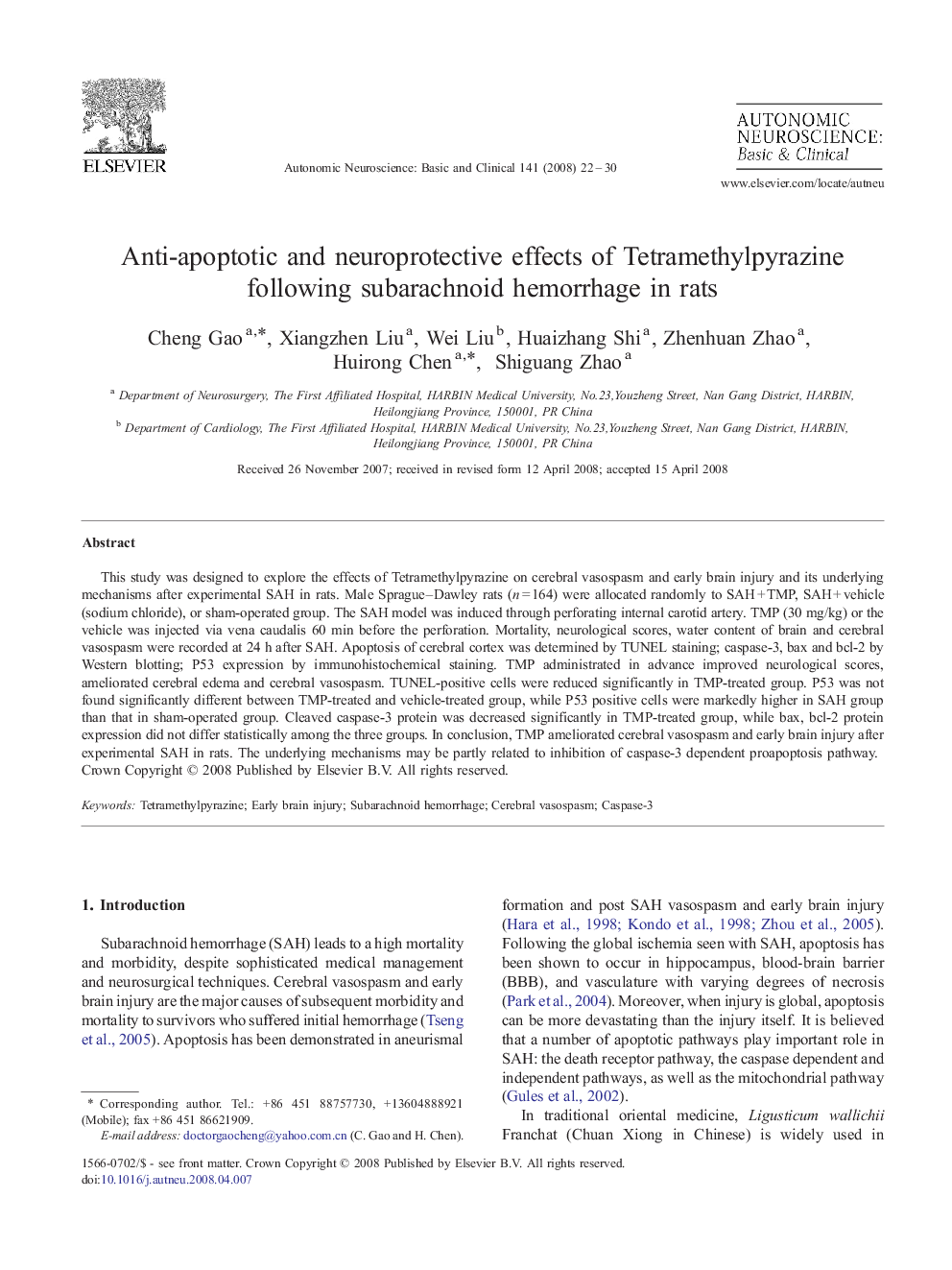| Article ID | Journal | Published Year | Pages | File Type |
|---|---|---|---|---|
| 6004838 | Autonomic Neuroscience | 2008 | 9 Pages |
This study was designed to explore the effects of Tetramethylpyrazine on cerebral vasospasm and early brain injury and its underlying mechanisms after experimental SAH in rats. Male Sprague-Dawley rats (n = 164) were allocated randomly to SAH + TMP, SAH + vehicle (sodium chloride), or sham-operated group. The SAH model was induced through perforating internal carotid artery. TMP (30 mg/kg) or the vehicle was injected via vena caudalis 60 min before the perforation. Mortality, neurological scores, water content of brain and cerebral vasospasm were recorded at 24 h after SAH. Apoptosis of cerebral cortex was determined by TUNEL staining; caspase-3, bax and bcl-2 by Western blotting; P53 expression by immunohistochemical staining. TMP administrated in advance improved neurological scores, ameliorated cerebral edema and cerebral vasospasm. TUNEL-positive cells were reduced significantly in TMP-treated group. P53 was not found significantly different between TMP-treated and vehicle-treated group, while P53 positive cells were markedly higher in SAH group than that in sham-operated group. Cleaved caspase-3 protein was decreased significantly in TMP-treated group, while bax, bcl-2 protein expression did not differ statistically among the three groups. In conclusion, TMP ameliorated cerebral vasospasm and early brain injury after experimental SAH in rats. The underlying mechanisms may be partly related to inhibition of caspase-3 dependent proapoptosis pathway.
